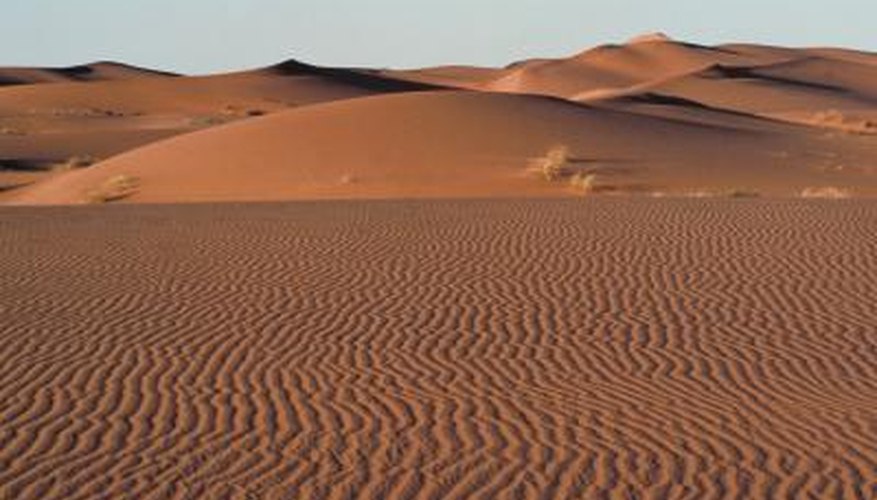The seven continents of the earth feature widely different topographies. Landmasses feature mountains, valleys and plateaus, as well as grasslands, tundras and deserts. The world's diverse topographies have similarities and differences. For instance, deserts and plains bear some common characteristics.
Topography and Size
Plains and deserts often share the same topography. With some exceptions, plains and deserts are generally flat with gentle slopes and hills. Even those deserts that feature more drastic slopes are surrounded by flatland. Deserts and plains both vary greatly in size, with the smallest deserts and plains occupying a few square miles and the largest occupying thousands of square miles.
- Plains and deserts often share the same topography.
- Even those deserts that feature more drastic slopes are surrounded by flatland.
Location
Plains and deserts are both global. They are found on all of the earth's continents except Antarctica; however, some scientists classify Antarctica as a desert due to its aridity. Within continents, plains and deserts occupy both landlocked regions and coastal regions. For instance, the Great Plains stretch across the middle of the United States, while the Gulf Coastal Plain extends northward from the Gulf of Mexico. Land may also surround deserts, such as the Arizona deserts.
- Plains and deserts are both global.
- They are found on all of the earth's continents except Antarctica; however, some scientists classify Antarctica as a desert due to its aridity.
Ecosystem
Plains and deserts share a similar kind of ecosystem. Their ecosystems are either barren or have sparse vegetation. However, some exceptions exists, such as the West Siberian Plain, which has regions lush with green forest and vegetation. In the desert, sparse vegetation is usually attributed to poor soil and little rain. Deserts have rocky soil encrusted with sand and salt. In the plains, sparse vegetation is attributed to severe weather. Plains suffer droughts; dust storms; and, depending on their geographical location, blizzards, tornadoes, ice storms and hailstorms.
- Plains and deserts share a similar kind of ecosystem.
- However, some exceptions exists, such as the West Siberian Plain, which has regions lush with green forest and vegetation.
Climate
Deserts and plains are both characterised by extreme temperatures. The world's hottest deserts can reach 48.9 degrees C, while the world's coldest deserts achieve temperatures well below freezing. The West Siberian Plain achieves subarctic temperatures, while plains in the southern United States reach temperatures well over 37.8 degrees C.
